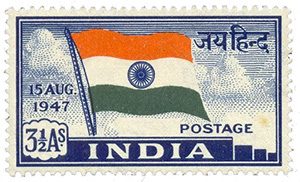
 It’s an easy trap to fall into: to be so distracted by goings-on in what have traditionally been the world’s largest pay TV and online video markets that we miss what’s going on in the rest of the world.
It’s an easy trap to fall into: to be so distracted by goings-on in what have traditionally been the world’s largest pay TV and online video markets that we miss what’s going on in the rest of the world.
Case in point is India. Five to ten years ago, it was easy to dismiss India as a yet-to-emerge market for pay TV. There was a vague assumption that IP video might succeed over mobile, but not anytime soon. And because per-subscriber revenue is so low, the conventional wisdom among infrastructure providers was that India wasn’t particularly worth their attention anyway.
Fast forward to the present day: India’s TV and online video industries are super-active, white-hot. Last summer, Hong Kong-based Media Partners Asia estimated that pay TV in India would grow at a 11% per year through 2018, driven by rising ARPU.
Just during the first calendar quarter of 2015 alone:
- India’s Ministry of Information and Broadcasting issued operating licenses to 11 TV operators between November 2014 and January 2015, and then another 11 between January and early March. In that short period, it represents about 15 percent of the total number of operators in the country (153 total, as of March 10)
- Operators are adding new TV channels at a rapid pace. Tata Sky announced that its move to MPEG-4 is making room for 20 new channels. The same operator launched 4K set-top boxes early in 2015.
- Outside media companies see India as a new market opportunity for their programming. Turner announced the launch of its Toonami channel with five operators in February. Online video provider Hungama.com is adding Disney and Marvel content.
- New online video providers are also coming on the scene. Viral Fever launched on online movie service, while Culture Machine, which distributes content over YouTube, raised US18M to fund its network of 400 India-based media brands and independent content providers.
- Graphic India raised about U$3M from the Asian investment arm of Chernin Media, which is also noteworthy because Chernin has a content partnership with AT&T (my guess is that this could help fuel a future AT&T ‘International’ content offering in the US).
- New operators and broadcasters are also raising money: One operator, Ortel Communications, raised INR1.75B (about US$28M) in March. India-based Zee Media is offering 108M shares in its IPO, and is launching its &TV service in the UK in combination with the trivia app QuizUP on April 6.
- New video advertising networks are coming on the scene, with launches by Komli Media and Seventynine, which offers an in-app advertising platform and advertising SDK for mobile video.
And of course, infrastructure providers are striking while the iron is hot:
- Verimatrix announced a video security win with Vuclip, a mobile VOD service available in India, Southeast Asia, and the Middle East
- Ericsson, Cisco, and Elemental Technologies all announced operator wins for their 4K-capable video encoding platforms
- Cisco also announced a win for its Videoscape multiscreen service delivery platform, with DTT operator Videocon 2dh.
- Companies like Micromax are introducing Android-based 4K/UHD TVs in India, although consumer uptake for 4K in India is likely to be sluggish.
- Amagi is winning deals with video content providers for its Cloudport cloud-based online video system
- Technicolor is considering making video technology acquisitions in the country.
- Home-grown infrastructure providers are emerging. New Delhi-based Chrome Data has announced an anti-piracy service to fight cable signal theft. Multivert India has partnered with Video Propulsion to offer low-cost headend equipment.
In short, the entire video industry ecosystem is thriving there.
If nothing else, this situation has prompted me adjust my perception as to which pay TV market might be the biggest one right now. If not from a revenue perspective, then at least in terms of opportunity and potential.
This article owes a major tip of the hat to NexTV India.

